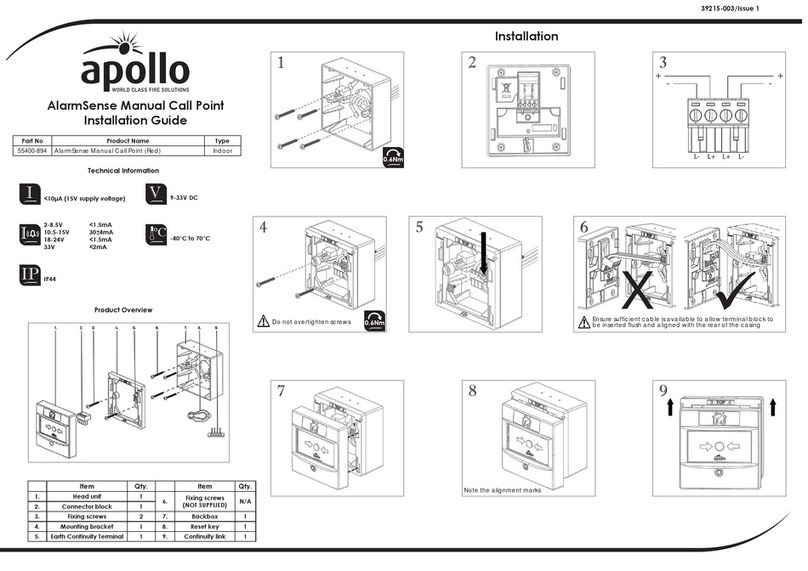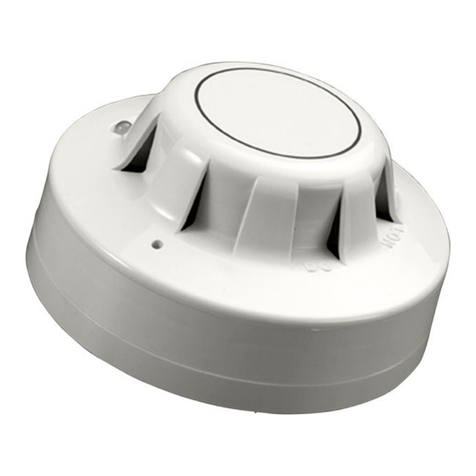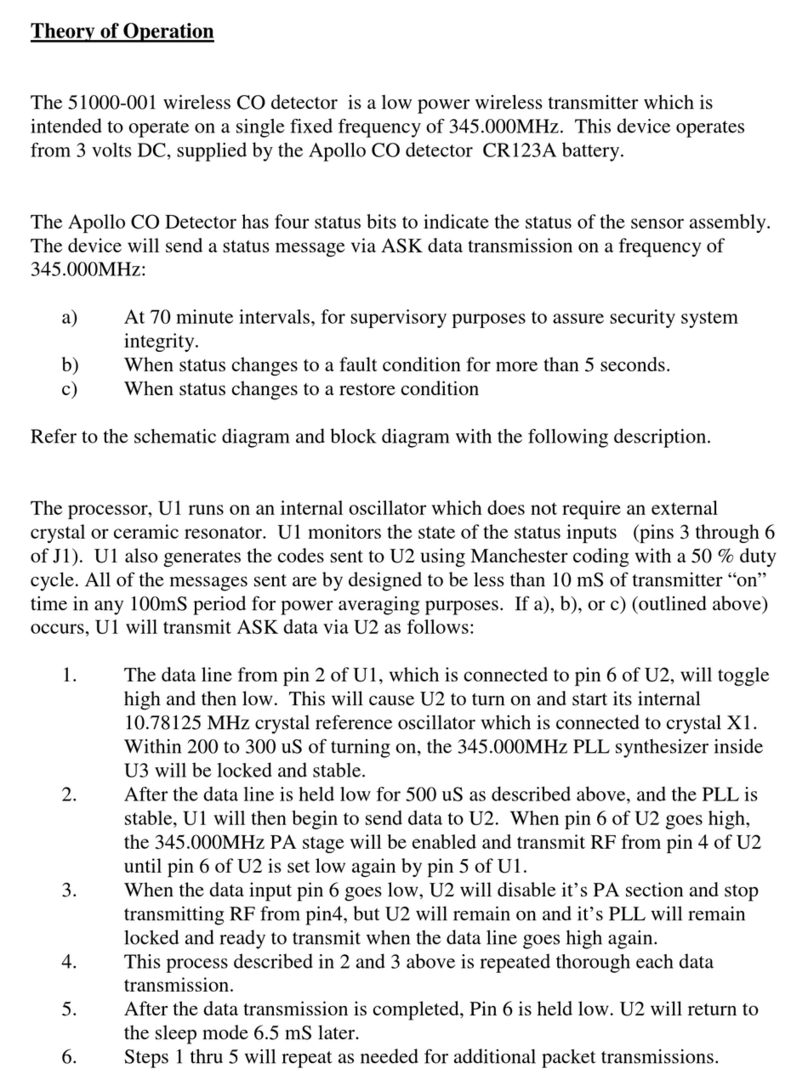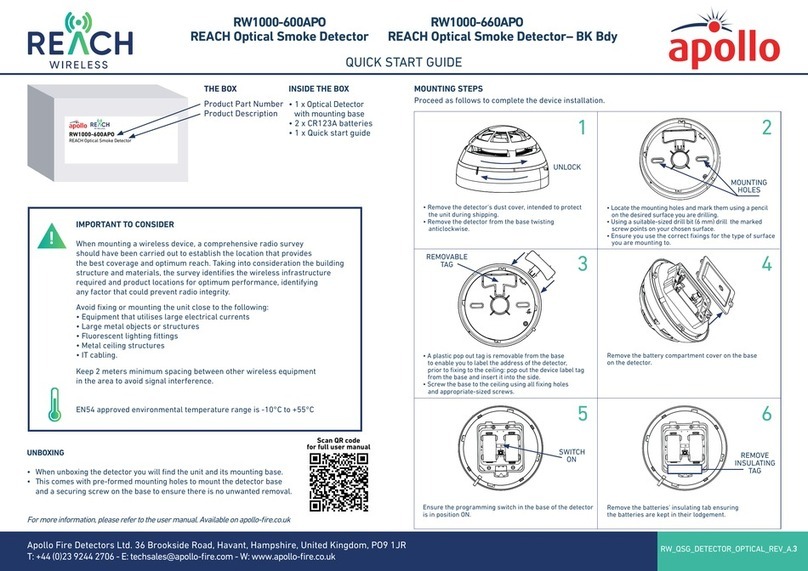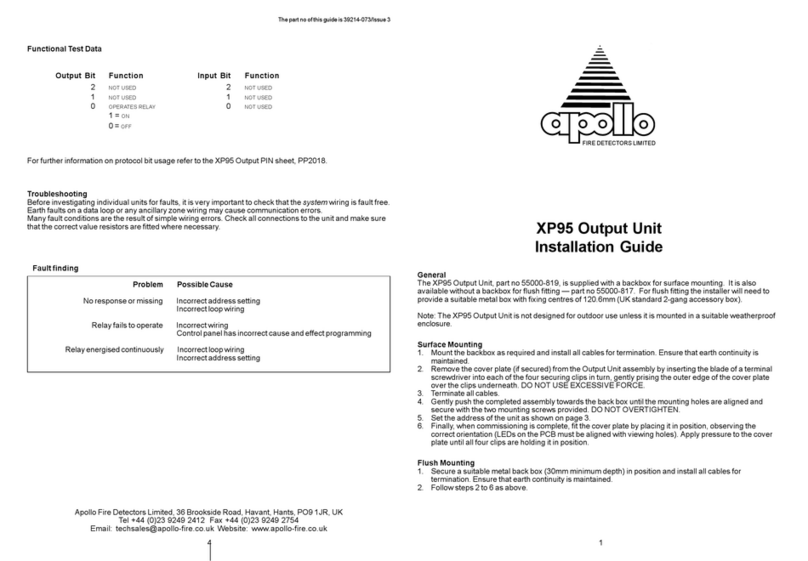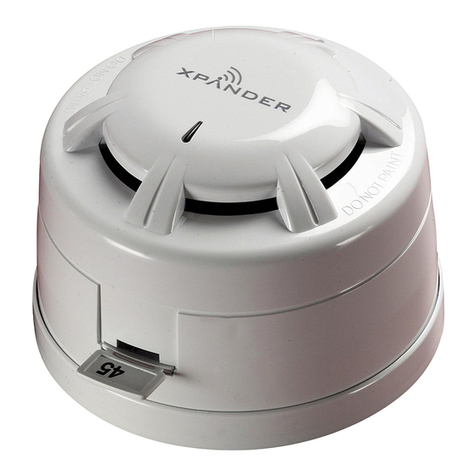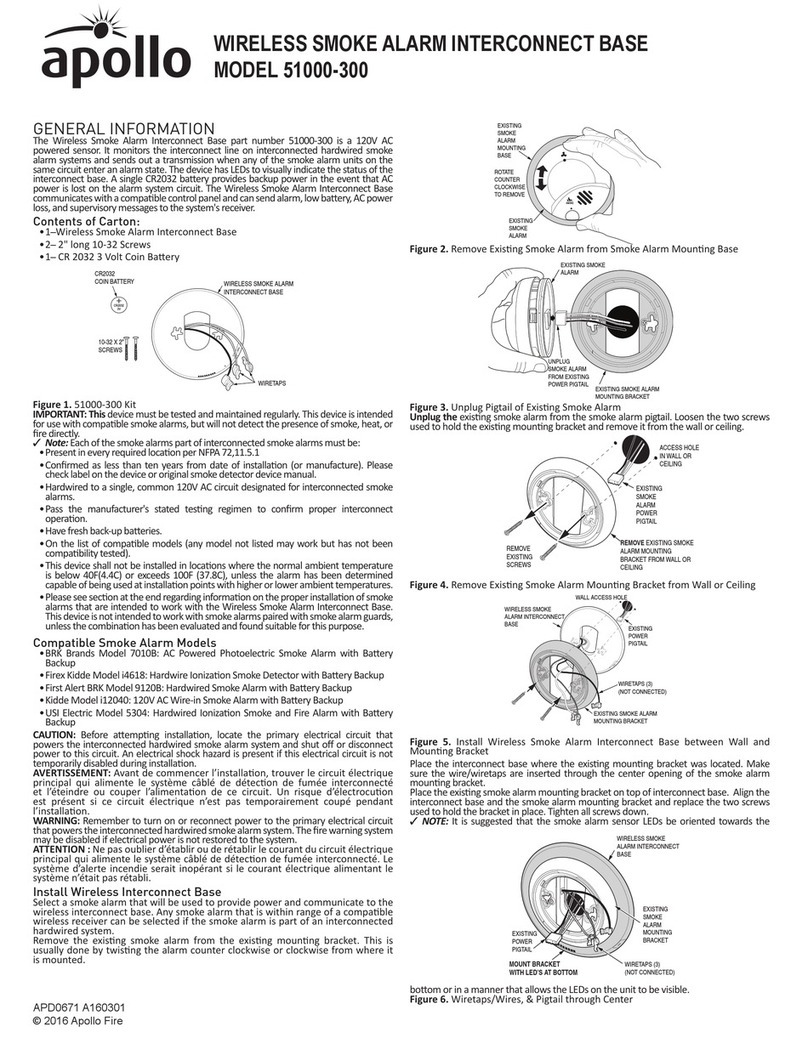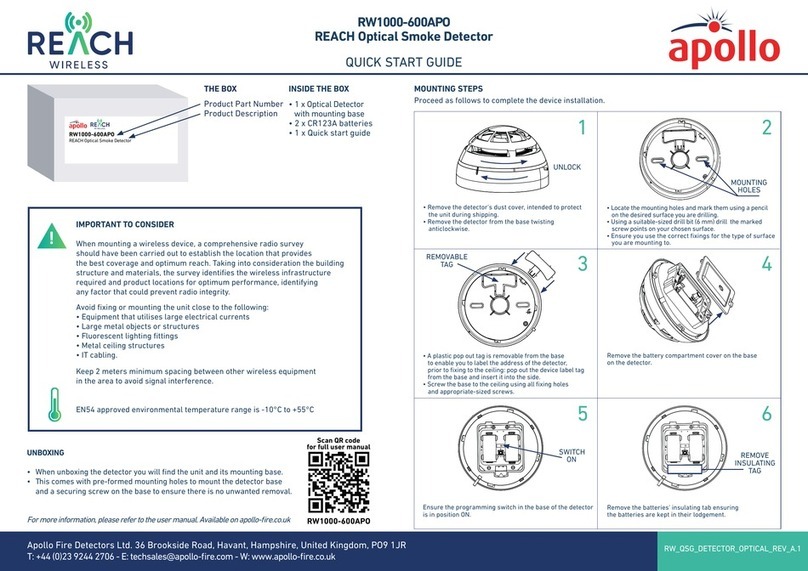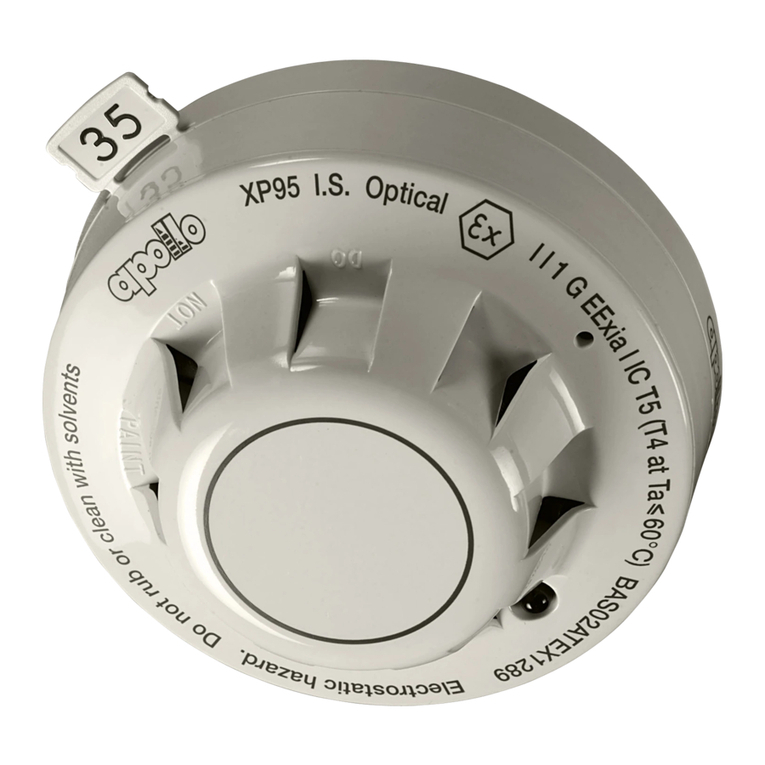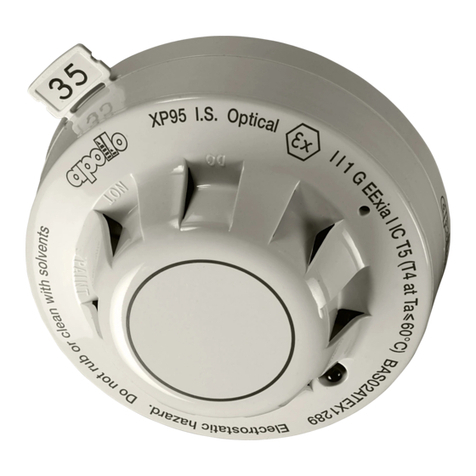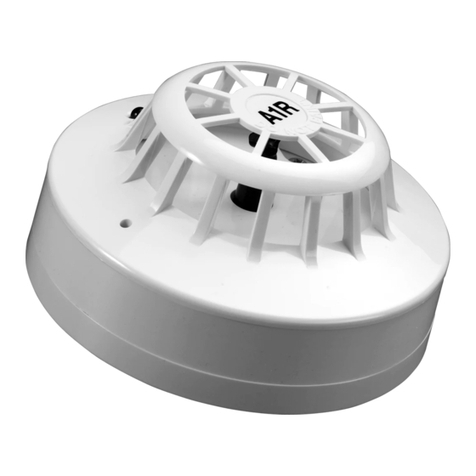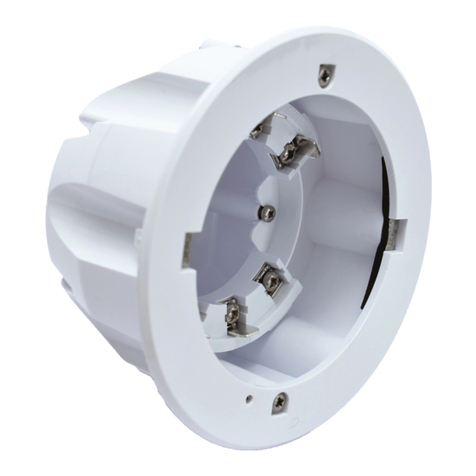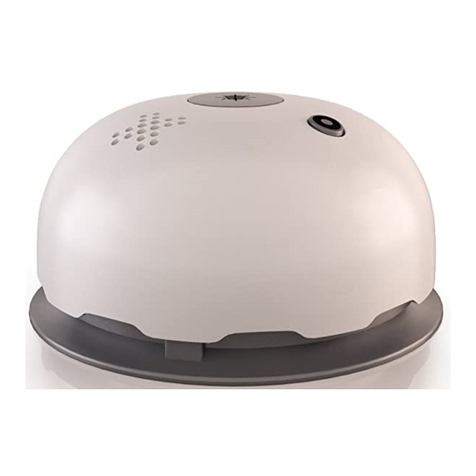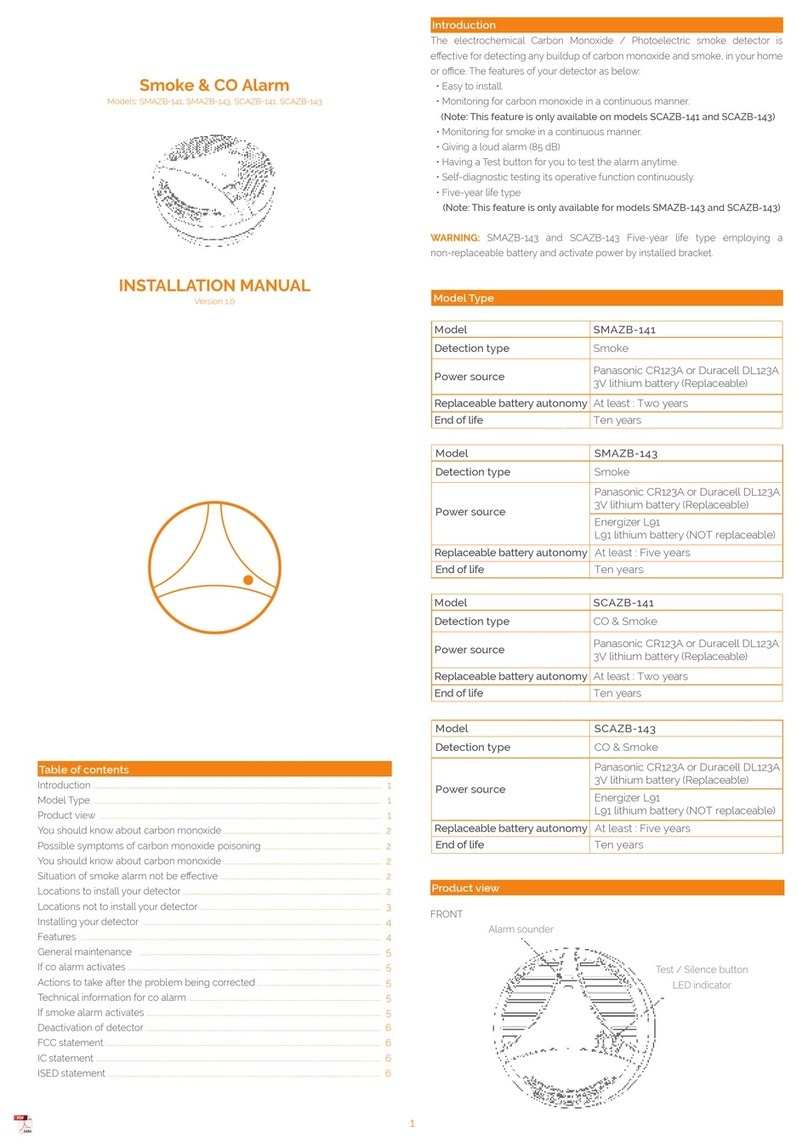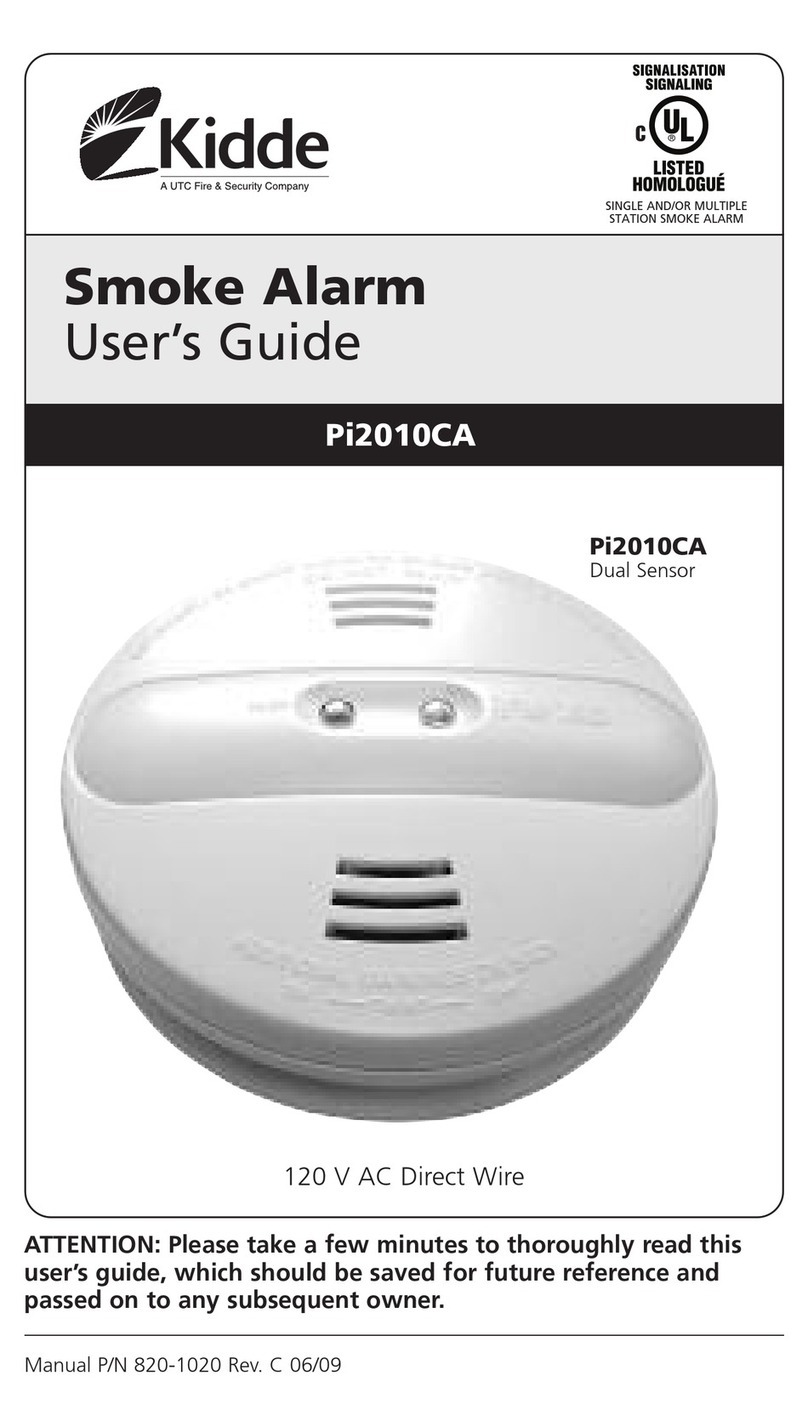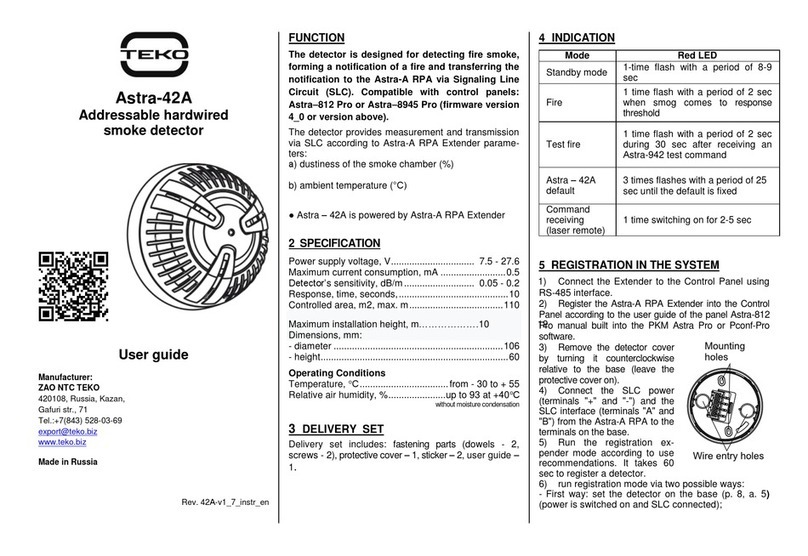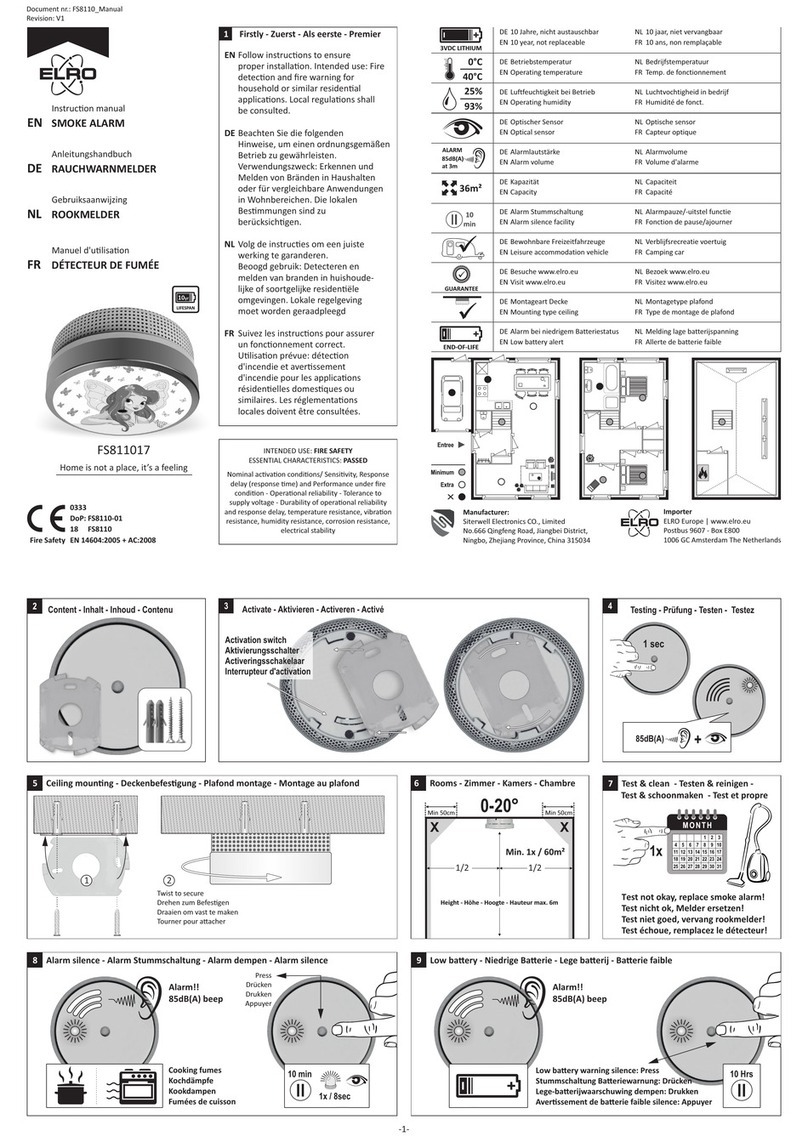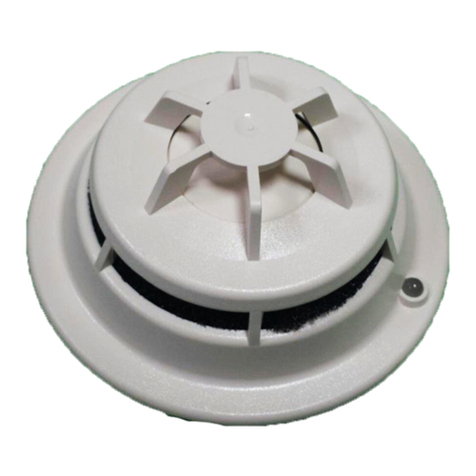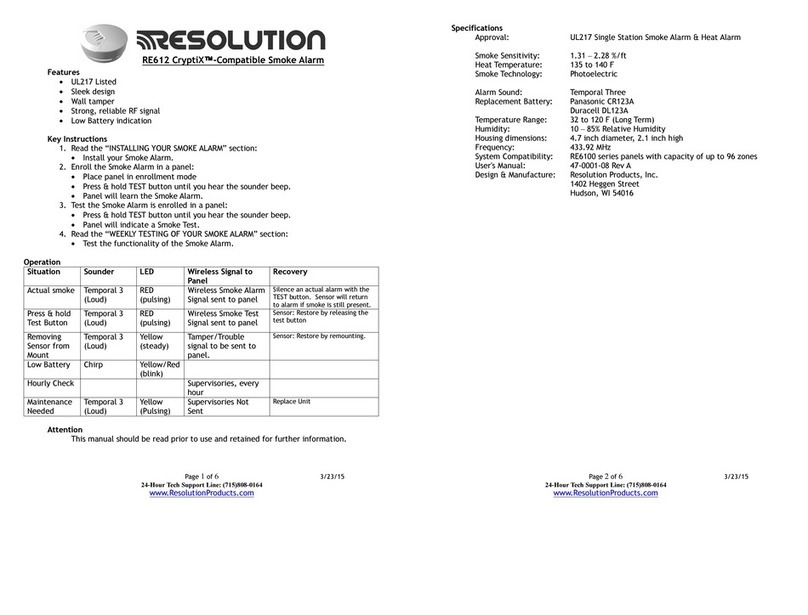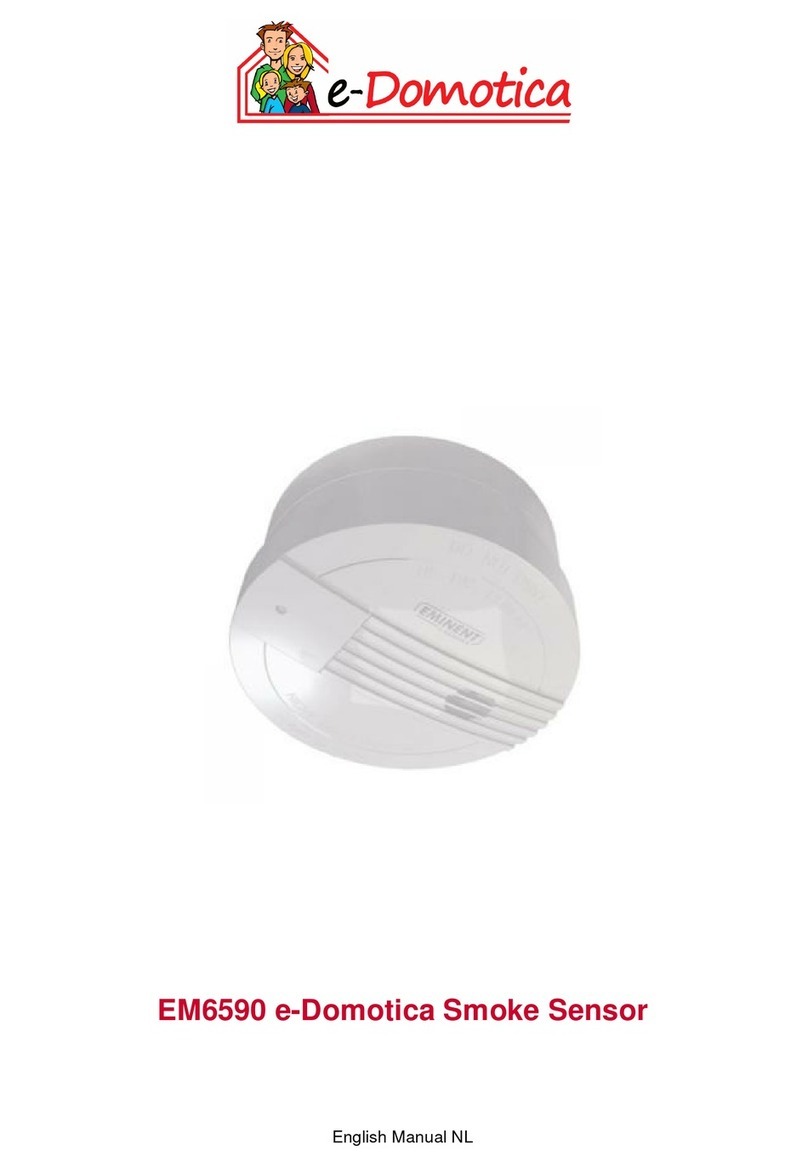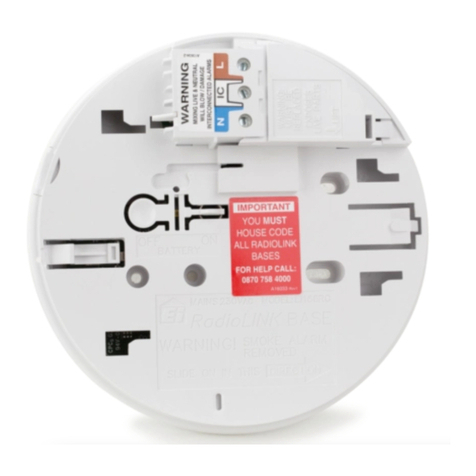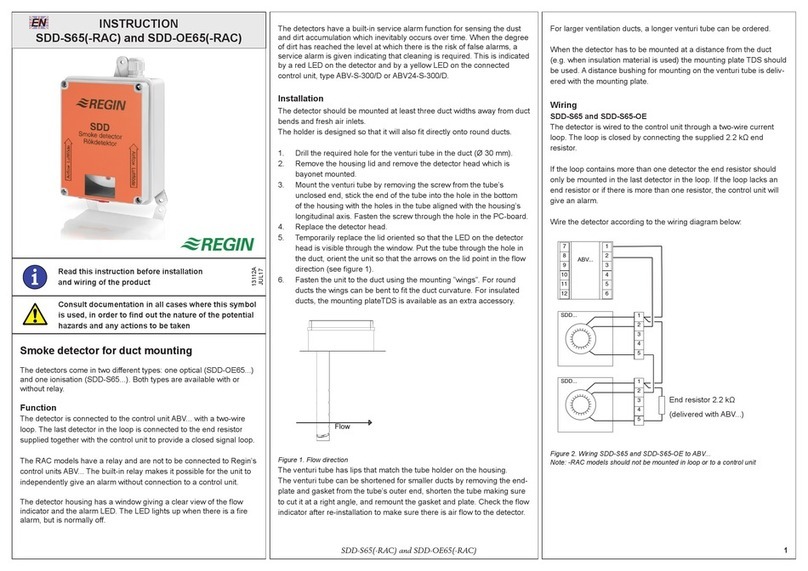7.2 RECOMMENDED LOCATIONS FOR CARBON MONOXIDE DETECTORS
Ceiling Mounted - position at least 12" from any wall.
Wall Mounted - position at least 6" from ceiling, but not lower than a light switch.
Where to install, ideally:
•Within 10 feet (3m) of a sleeping area
•Inside the bedroom if it contains a fuel burning appliance
•On every floor of the building
•Ideally, install in any room that contains a fuel burning appliance
•If the appliance or the room is not normally used, such as the boiler room, the
detector should be placed just outside the room so the alarm can be heard
more easily
Figure 12 - CO Detector location diagram
Where NOT to install, ideally:
•Directly above a sink, cooker, stove or oven
•Do not locate detector within 5 feet (1.5m) of any cooking appliance
•Next to a door or window that would be affected by drafts i.e. extractor fan or
air vent
•Outside
•Do not install in any environment that does not comply with the detector’s
environmental specifications
•In or below a cupboard
•Where air flow would be obstructed by curtains or furniture
•Where dirt or dust could collect and block the sensor
•Where it could be knocked, damaged, or inadvertently removed
7.3 MOUNTING PROCEDURE
NOTE: The Wireless Combination Smoke, Heat and Carbon Monoxide Detector
should only be installed by a competent technician or installer.
NOTE: The Wireless Combination Smoke, Heat and Carbon Monoxide Detector
must not be used with a guard.
NOTE: DO NOT attach the detector to removable ceiling panels.
NOTE: Two warning labels are provided with the detector. One should be mounted
near the CO detector and the other near a source of fresh air where members of the
household will gather if the alarm signal sounds.
CAUTION: Airborne dust particles can enter the detector, remove the detector
before beginning construction work or other dust producing activity. Immediately
replace detector when dust producing activity has ceased.
WARNING: DO NOT PAINT Detector
Once a suitable location has been identified install the mounting base on the ceiling
or wall (if local ordinances permit) using the two screws and anchors provided
(Figure 13). Remove the battery pull tab (Section 5.1) and ensure the detector
powers up (Section 5.2). Fit the detector on the mounting base (Figure 14) and
turn clockwise until the detector clicks into place and the alignment notches are
aligned (Figure 15). Test the detector as described in Section 9 FIELD SERVICE
TESTS of this installation guide.
